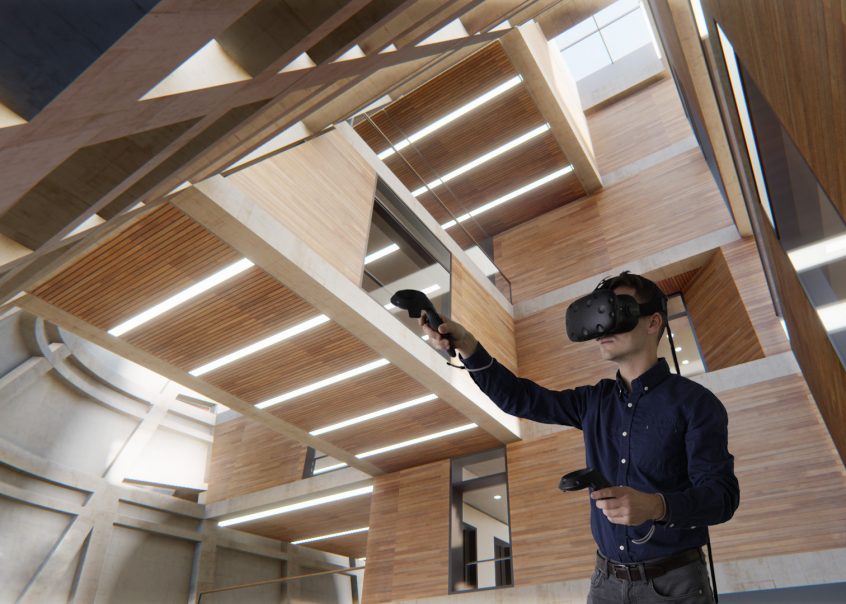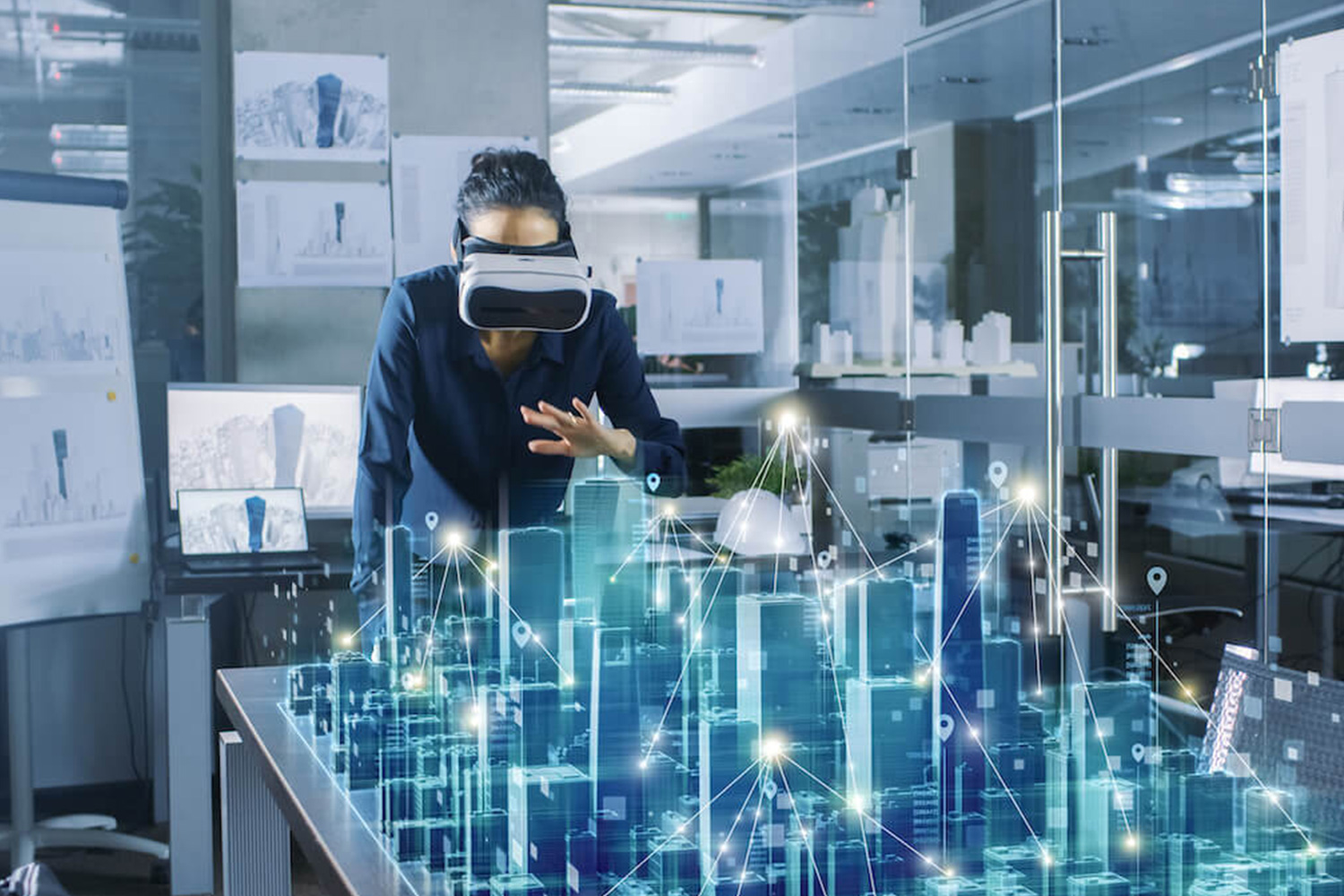Architecture is the art of turning visions into reality, true! Every aspect of design development, right from blueprints and 2D drawings, to physical models, to 3D models, and visualizations, aims at reinforcing this idea of turning imaginations into concrete reality. But with the growing time and technology, are the current tools enough to bridge the gap between the idea and the built?
One of the challenging aspects of the architectural profession is to master the art of convincing, convincing the clients/users that the design is in safe hands and will look exactly like or better than the visualizations. Isn’t that the reality of creative fields? The end-user can always take a leap of faith when it comes to creative imagination and how the product will shape up with reference to the prototypes. But, with time and tide, technology is changing too! The emergence of virtual reality has worked wonders not only to bridge the gap between designs and reality but also to add an edge to architectural representations. AR and VR have made a paradigm shift in the way architects work. Virtual reality is shaping up in architecture at various stages like design conceptualization, development, real-time design monitoring, architectural presentations, and building information modeling.
Click here to check the PAACADEMY’s workshop about “Designing in Virtual Reality.”
Architecture is evolving with VR!
As per an article on virtual reality in architecture, 9 out of the 20 major architectural firms across the globe use VR for design processes. VR has showcased an exponential increase in the past few years. There has been a wide increase in usage of head-mounted displays (HMDs) like Oculus Rift, Samsung Gear VR, HTC Vive, Microsoft HoloLens, and Google Cardboard for client presentations and concept formulations stages in design. As per a survey by CGarchitect, the usage of VR comprises up to 40% in Europe, 21% in the USA, 11% in Asia, and 3% in the middle east. On the other hand, 43 % of the global VR users comprise Architectural visualization studios, 22% form Architectural firms, whereas, even 4% of interior design firms have made a cut to the list. The data here clearly shows how VR over time is carving its niche in architecture, construction, and design realms.

Why are architects keen on using virtual reality technology?
Yes, there is a ton amount of technology out there, the question is what makes AR & VR the prime focus on advanced design systems today? Let’s have a look at how VR enhances the architectural process:
Unmatched client/user experience
Since one of the main aspects of a client-facing profession like architecture is offering a memorable and seamless user experience, VR aids in doing this through its immersive 3D experience. This realistic immersive environment offers an accurate insight of scale, depth, and spatial awareness to the clients helping clients to build more faith in the design process, and have a better understanding of the scheme, thus resulting in better decision-making on both ends. This further helps in planning associated business processes accordingly and having a clear plan of action when it comes to the execution and construction of the project.
Thus, avoiding any last-minute hasty decisions made on site due to the gap between the design and ground reality. This also amplifies the ability to communicate design intent more apparently making the concept, process, and design much clearer, offering the client a true sense of inhabiting the space and creating a sense of belonging right from the inception of the project. Moreover, this sets in realistic expectations and helps in inculcating the experiential value of the space accurately right from the pitch stage.
Seamless Collaboration
Virtual reality can do wonders when it comes to aligning teams and mapping out the process. It aids with tools to have all the stakeholders of the project- the contractors, engineers, and designers stay onboard, on the same page, and coordinate more efficiently. Traditionally, different stakeholders might have a varied understanding of processes and everything does not get aligned when the design is just in the form of 2D drawings and communication is solely through emails.
With the invention of Virtual Reality in architecture, every stakeholder can have a much better and more robust understanding of the project. While the real-time modeling tools help everyone’s concerns and processes to be in one system. Building information modeling by means of Ar & VR helps process information and integration different information such ore efficiently. Showing and developing the project in real-life and real-time is a revolutionary shift that VR offers.
Enhancing partnerships
The business impact of Virtual Reality in architecture is pathbreaking. Virtual reality in architecture has burred the physical distance making it easy to design across borders and minimizing the need to be connected physically to do business. Tracking the design progress and communicating design stages has become easy through virtual information processing and connectivity offered by VR tools. The efficiency of the tools has also reduced the time required to act upon the feedback and reflect it in the designs. Thus, integration of VR means opening up of ore business avenues for architectural firms irrespective of the physical borders.

How are architects making a difference through VR?
While it is now established that VR is the future of design, collaboration, and execution, architecture firms such as Zaha Hadid Architects, Partisans Architecture, Arturo Tedeschi Consulting, Visual-Wise, theConstruct, Stambol Studios, IrisVR, Inc., and many more are some examples of the leading firms around the globe that have resorted to making pivotal shifts in business through VR technology.
In Conclusion
From the conceptual stage to execution, Virtual reality technology helps to build and optimize relationships between different spaces, light, construction, and materiality used in a project. Virtual reality in architecture is thus all set to evoke a proactive moment of making design accessible and efficient for all.

























interesting